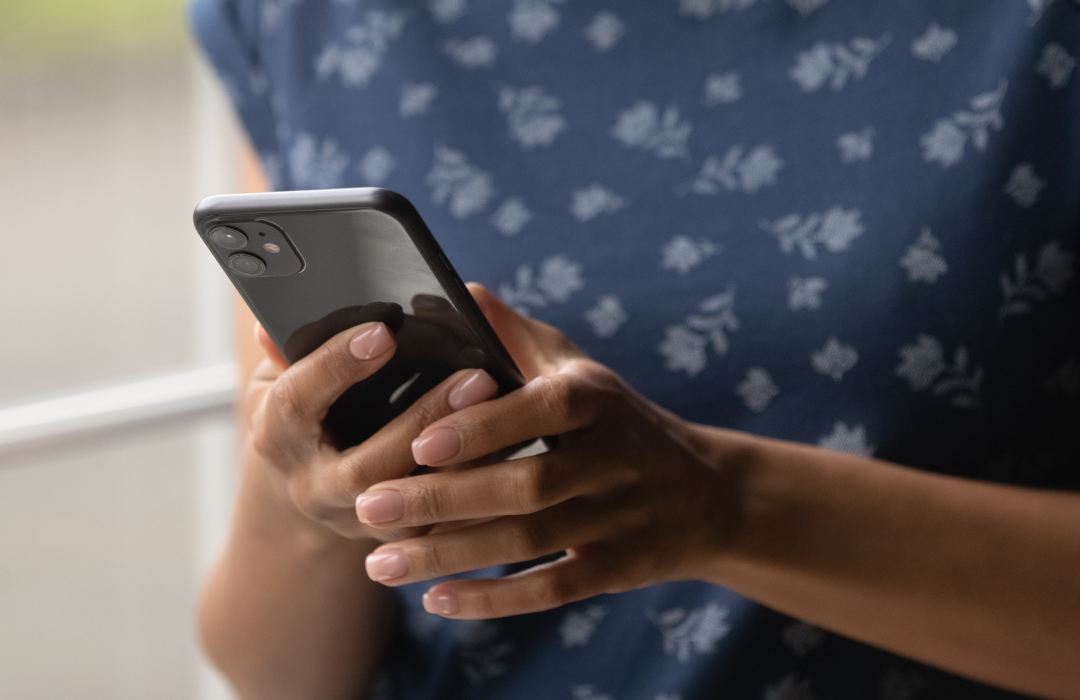Personalization: The key to customer experience, loyalty, and growth

Time to read: 9 minutes
Personalization: The key to customer experience, loyalty, and growth
Imagine a world where each customer enjoys a unique experience, tailored exclusively to them. The ideal scenario would be for everyone to have their preferences and needs reflected as they interact with various businesses and organizations. How do we begin to achieve that? Personalization.
Personalization is rooted in understanding your customer journey and the technology available so well that you’re able to provide a completely personalized experience tailored to each and every customer’s experience with your brand.
Admittedly, this is easy to say and difficult to execute.
Personalization has become a popular buzzword, but what does it really mean and look like in action? Most organizations are focused on reacting versus being proactive when it comes to the customer journey. While understanding a customer’s current needs is a critical step to being able to convert, better experiences start with a strong, customer-first personalization strategy.
The potential of personalization for customer journeys
Personalization is a double-edged sword and comes with its own benefits and challenges. The more personalized the approach, the more customer data is needed. This both raises customer concerns about data privacy and requires businesses to securely manage large volumes of data from multiple sources to create a cohesive customer profile.
When implemented effectively, however, its impact on customer engagement and revenue is undeniable. According to Twilio’s State of Customer Engagement Report, 64% of consumers said they’d quit a brand if their experience wasn’t personalized. That’s leaving a lot of money on the table. Wonder why consumers feel so strongly about personalization? It’s all about relevance and convenience. The majority of consumers say personalized engagement makes it easier to find what they want, get relevant recommendations, and receive tailored promotions and messages.
The true definition of personalization
“Personalization” is sort of vague, though, isn’t it? When people refer to personalization, they might be referring to something as simple as adding a name variable to an email, or something as complicated as building an engine that offers a unique experience to each customer. To take full advantage of personalization, let’s explore what true marketing personalization looks like.
What is customized communication?
This is just simple, old school, variable-driven content. Think of it as a rule-based variable that catches the eye. It uses simple logic like, “if this, then that.” You most commonly see this with email marketing when people use first name variables in subject lines and email copy. It’s reliable, it provides a lift in open rates, but it’s not a complex way to approach your customers.
Is it personalization? Nope! Variables-based customized communication can provide a customer with the perception of personalization, but the meaning behind the content being served isn’t customized in most situations.
What does segmentation mean?
Segmentation is a way to slice and dice your market by attribute in order to better target them. What are the benefits of segmentation? Great question! Segmentation can be used to create stronger marketing messages in your email or SMS communications, to target your audience with digital ads, to craft more effective marketing strategies, and lower your acquisition costs, to name a few. Segmentation can use demographic, firmographic, psychographic, or behavioral information, or some combination of some or all of them.
Is it personalization? Nope–again! You can, however, use segmentation to help inform your personalization. Assuming that your segmentation is based on customer data, you can provide simple personalization by crafting marketing strategies that appeal to the larger groups of people.
What is real-time personalization?
Real-time personalization is the result of synthesizing information across multiple systems that collect pertinent information about your customers and delivering a relevant experience or interaction at the right time. Although there is a lack of clarity around what personalization aspects they use (they don’t like giving out the secret sauce), Netflix and Amazon have pretty effective examples of real-time personalization.
Is it personalization? Yup! That might not come as a shock, but real-time personalization uses engines that leverage multiple streams of customer data and enable artificial intelligence and machine learning to create experiences based on a person’s behavior.
What is 1:1 personalization?
1:1 personalization is a completely immersive customized experience for a customer. This level of personalization provides a completely unique experience for every customer. It means that an organization can personalize its pricing, products, offers, and user experience thanks to technology that helps a marketer synthesize information collected about that user over time.
Is it personalization? You bet! This is the ideal state. It’s a segment of one. Anna receives ads tailored to Anna’s preferences. Anna receives email and SMS offers pertinent to Anna. Anna gets an ecommerce store, for example, designed for Anna. It’s personalization in its purest form.
Although the terms above are used interchangeably in the industry, there is a clear distinction between the building blocks of a user experience and launching a way for a customer to truly get the experience that will keep them coming back to your business again and again. But it’s not easy.
The problem with customer data
Businesses are already examining ways to maximize digital interactions, create personalized and live experiences, and collect and leverage data at every point along the journey.
All of those great ideas depend on having a source for all of that first-party data. Fragmented data doesn’t work. Siloed data doesn’t work. The data your organization needs has to be trusted, timely, and accurate. It needs to reflect a complete view of the customer across their engagement.
So how can we overcome those challenges to capitalize on the benefits of personalization? We’ve got some strategies.
Break down data silos
There are too many systems with too much data collected across your organizational ecosystem. From websites, mobile apps, marketing platforms, contact center platforms, digital ads, in order to ensure a meaningful look at the data you have available to you, combining, and analyzing the data from different sources and systems is the only way to create a complete picture of the customer journey. Define the system of truth for your organization and drive all of the data sources to it to ensure every department in your organization has the context it needs to serve the customer better.
Keep your data clean and compliant
Marketers are collecting data whether consumers realize it or not. Organizations are gathering and storing customer data across email, SMS, chat, app, website interactions, social platforms, ad platforms, customer service calls, and research and development.
Most formats of data are non-agnostic and require a level of administrative gymnastics to get it to the point where data can be analyzed. Without being able to gather the insights from a source of truth, data is the equivalent to a bunch of knick knacks gathering dust on a shelf in an old hutch, useless.To complicate matters, points of imperfect user entry, fraudulent accounts, or old customer information mean that the data could be untrustworthy.
Safeguard the business from old, incomplete, or inaccurate data by reducing manual entry and validate and transform the data being collected to ensure its value. Organizations need to be able to trust that the data used to make decisions is clean and accurate so they are able to turn those ones and zeros into insights that serve the business.
Turn customer data into intelligent engagement
Once you have good, clean, non-siloed data, it’s time to put it to use. When the data is synthesized by effective technology, marketers are able to deliver personalized messages at the right time and frequency for each customer. They’ll identify the best channel for any conversation or notification, and allow the business to invest where it makes the most sense.
What’s more, it will offer the context needed for the whole organization to delight customers by anticipating their needs and building on earlier interactions. When done effectively, it will also allow organizations to create customer profiles and audiences. When all of this is said and done, it’s time to activate campaigns and organizational efforts that reflect the preferences of the customer. This brings us one step closer to the ideal state of personalization.
Deliver the next level of customer journey experiences
Understanding the customer journey is a critical step to ensuring that personalization is possible. With truly personalized approaches, you can go from reacting to the customer experience to proactively crafting a higher converting customer journey. This holds vast new opportunities for engagement and growth when leveraged effectively.
Differentiate by prioritizing the customer
Businesses are fighting for eyeballs online. For example, if a customer searches for a sweater online, what is going to draw them specifically to the store? Moreover, since building loyalty is such an integral part of customer interaction, marketers need to find ways to reinforce the brand value for consumers. Whether you’re focusing on the online experience, in-person, or both, it’s all about creating personalized interactions that not only retains customers, but reinforce their loyalty to your brand.
Go beyond just personalized advertisements
A personalized experience doesn’t just mean that customers are getting ads for products they’re more likely to buy–it means offering the best start-to-finish journey for each unique person who enters your business or visits your site. Good personalization is submersion into the preferences of the customer through the filter of the brand.
Whether it’s real-time personalization, where recent actions act as a trigger for relevant offers, pricing, and products, or it’s 1:1 personalization, where a person’s experience is customized from product to price to UX, personalization can make an impact on your business. In fact, according to our State of Customer Engagement Report, consumers say their spending will increase on average by 18% when businesses personalize their engagement, but companies report the average increase is actually more like 46%.
Think about personalization after the sale
True personalization doesn’t stop with the pre-sales experience. The post-sales experience has an opportunity to offer more chances to use cross-departmental data to inform the support side of the customer experience as well. Addressing questions and providing insights to customers via their preferred channels is a great starting point. Being able to address the same issue across multiple platforms and devices is where omnichannel personalization really starts to offer the value that the customer expects.
Whether you’re staffing up for the holiday rush or just ensuring your agents have what they need to help reduce the complexity of their job, having context on the customer’s experience so far is going to ensure that customers are processed quickly and to their satisfaction.
By providing prospective and current customers with the personalization they crave, businesses are able to improve both the customer acquisition costs as well as the customer lifetime value their business leadership demands.
Impactful personalization in action
Brands have been partnering with Twilio to personalize their customer experiences. Let's take a look at some successfull customer stories.
Online interactions improved in-store purchases for BONOBOS
Bonobos, an ecommerce-driven apparel company that sells men’s attire, opened its first in-person location in 2007. Now with over 60 locations, personalization is their focus. “Guides” or experts that helped men find the right items with the right fit, ship their choices right to the customer’s home or offices.
New appointments were driven by Facebook ads. The company wanted to know if those digital experiences were translating to sales. Twilio Segment enabled Bonobos to identify whether purchases were made online or during an in-store visit. Then, the Bonobos team could analyze the in-store sales to learn how many were a result of people seeing the Facebook campaign.
The results? They doubled return on ad spend and tripled their purchases (online and offline). Read the full customer story here.
Two-way communication keeps customers in the loop at Visionworks
Visionworks, a leading optical chain, faced challenges in managing high volumes of customer communications while ensuring timely delivery of messages such as appointment reminders and order updates. To address this, they partnered with Twilio for its scalable and reliable communication solutions.
Using Twilio SMS and Email, Visionworks improved engagement and conversion rates. SMS proved particularly effective for time-sensitive notifications, boosting appointment bookings and reducing no-show rates.Thanks to two-way SMS, it became much easier for customers to confirm or cancel appointments and share feedback quickly.
Visionworks also personalized communications through customer preference-driven channels. The partnership with Twilio established a communication strategy that maintains patient engagement and ensures seamless eye care experiences year-round, setting a benchmark for effective customer interaction in healthcare.
Read the full customer story here.
Smart segmentation turned browsers into buyers at Arduino
Arduino set out to improve how it interacts with visitors to its website by splitting them into "casual browsers" and "ready-to-buy" customers. By using Twilio Segment, Arduino could predict visitors' shopping intentions from a wealth of data. This enabled Arduino to spend its advertising budget more wisely, targeting those ready to buy while giving personalized help to those still exploring.
The Arduino team implemented this strategy on top of a robust data foundation, ensuring GDPR compliance given Arduino's significant global presence. The new system stopped data silos and discrepancies that once plagued their operations, dramatically streamlining customer data handling.
Now, Arduino sends tailored messages across its many web platforms and offers specialized support. The data-driven approach has boosted customer engagement and improved product launch strategies. Going forward, Arduino plans to use Twilio Segment to boost customer lifetime value and explore SMS as a new channel.
Read the full customer story here.
Embrace personalized customer experiences with Twilio
Beyond the buzzwords and the internal jargon, customers just want a good experience. No matter if you're a large enterprise or a growing brand, personalized engagement is the key to unlocking your business’s full potential.
The best way to do that is to make sure that your systems are connected so that your teams have the information they need to help them. Whether they are your technology teams bringing 1:1 personalization to life, your in-store experts providing relevant information, or the agents helping resolve customer issues: it all boils down to being able to provide a useful, tailored experience.
With sophisticated personalization, the promise of a holistic customer journey designed to maximize engagement, increase lifetime value, and lower cost of acquisition is very real. The ability to bring together the disparate pieces of technology into a singular bouquet that serves to provide the customer with a seamless, high-converting experience is available.
If you’re ready to start personalizing, sign up for a free Twilio account today.
Related Posts
Related Resources
Twilio Docs
From APIs to SDKs to sample apps
API reference documentation, SDKs, helper libraries, quickstarts, and tutorials for your language and platform.
Resource Center
The latest ebooks, industry reports, and webinars
Learn from customer engagement experts to improve your own communication.
Ahoy
Twilio's developer community hub
Best practices, code samples, and inspiration to build communications and digital engagement experiences.


